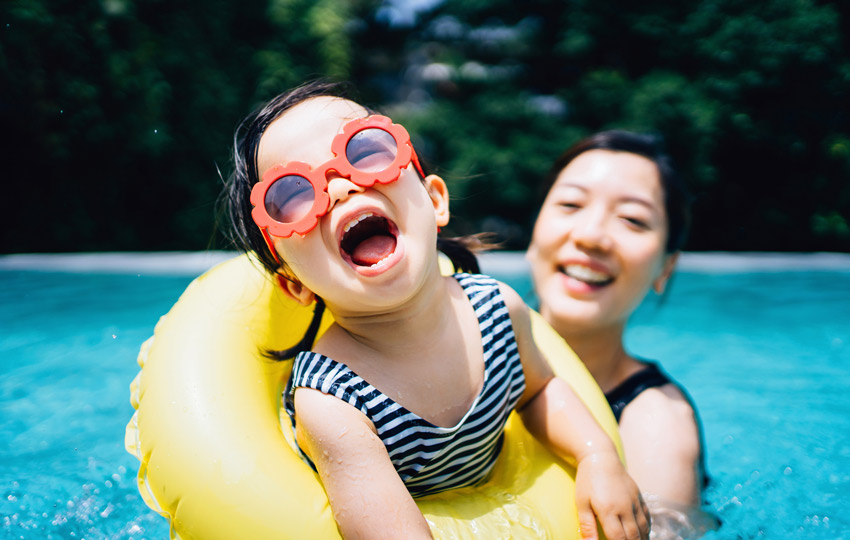Keep your kids safe around water with these three steps.
Memorial Day weekend traditionally marks the start of summer. It is also when experts see an uptick in drowning and near drowning incidents.
“Drowning is a silent killer,” said Stacey Pecenka, manager of the Pediatric Trauma Injury Prevention Program at Monroe Carell Jr. Children’s Hospital at Vanderbilt. “In less than two minutes under water, a child can lose consciousness, and brain damage can occur after just four to six minutes.”
Parents are frequently cautioned about water safety — but accidents still happen.
The statistics in the United States are startling:
- There are 11 deaths each day from drowning.
- One out of every five drowning victims is a child.
- For every child who drowns, another five children are treated for injuries related to being submerged in water.
- Overall, drowning is the No. 3 leading cause of death in children ages 5 to 14 years old.
Adults should be aware that drowning doesn’t look like the dramatic splashing or shouting that’s often depicted in movies or TV shows, Pecenka said.
“The sad truth is that many times the child slips under water silently, and even people near or in the pool with them have reported hearing nothing during drowning incidents,” she said.
Safety experts at Children’s Hospital want to highlight the ABCs of water safety:
A – Adult supervision
- Active adult supervision is arguably the most important water safety rule. At least one adult should be focused on the pool and close enough to touch the swimmers if necessary.
- Designate an adult “water watcher.” This person’s sole responsibility is to watch the pool area for 15 minutes and not read or talk on the phone. After 15 minutes, pass the responsibility to another adult for 15 minutes, and so forth. Ensure that the “water watcher” is a sober adult who knows CPR and has basic swimming skills.
- “Floaties” (inflatable armbands) or other inflatable flotation devices are not life jackets and should never be substituted for adult supervision.
B – Barriers and boating safety
- Have a properly working physical barrier such as a fence, pool safety cover and pool alarm (one meeting code requirements).
- If the home opens directly to the pool, door alarms and locks should be installed.
- Always swim at a lifeguarded beach and pay attention to the beach warning flags.
- On a boat, wear properly fitted U.S. Coast Guard-approved life jackets.
C – Classes
- Teach children to swim. The American Academy of Pediatrics recommends swimming lessons for children as young as 1.
- Adults and children 13 and older should learn infant and child CPR.

